

.gif)

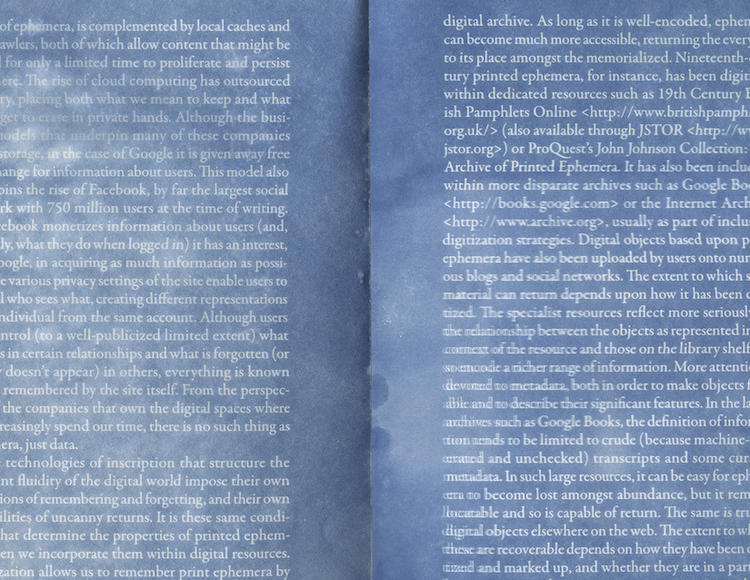
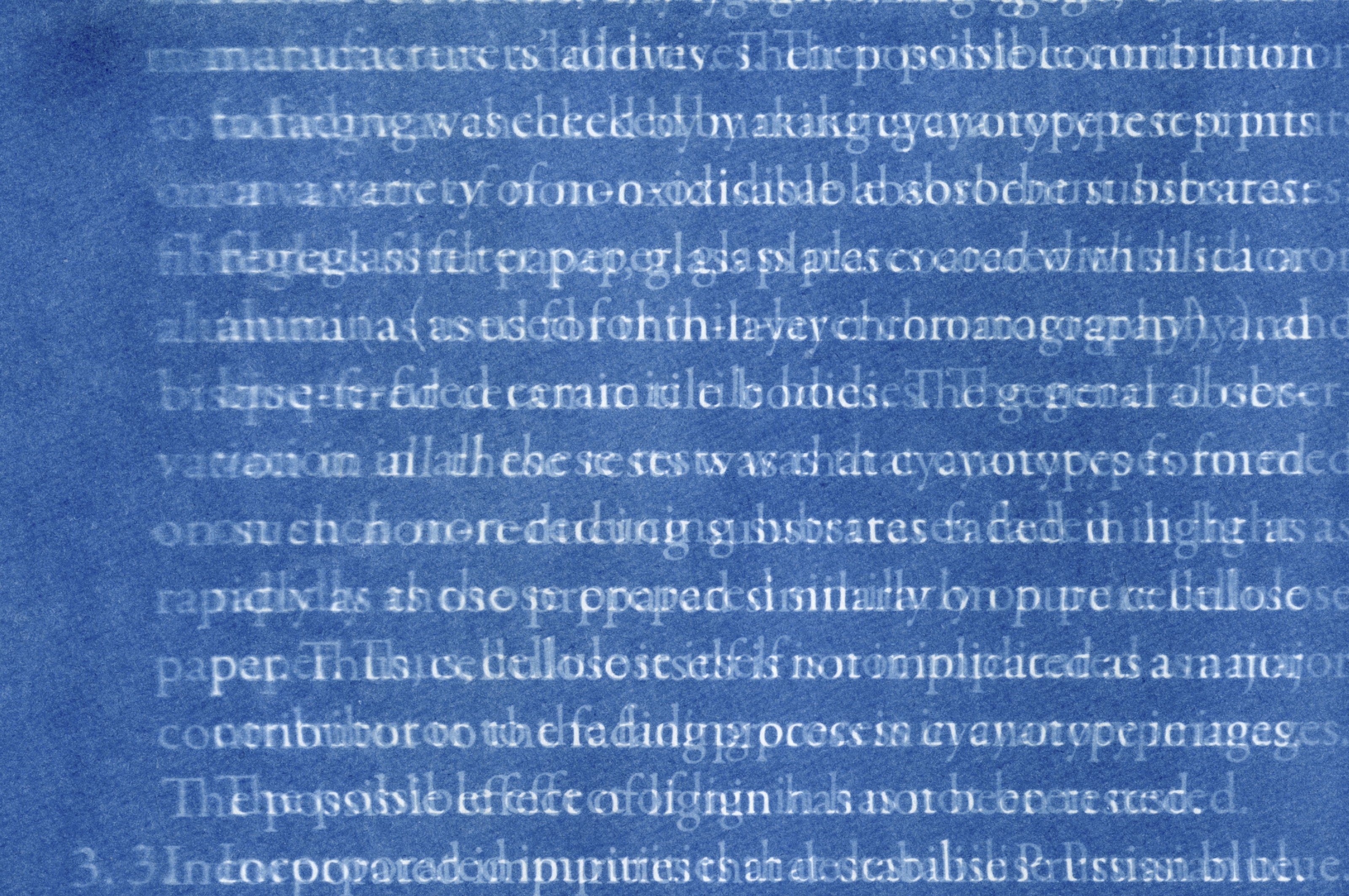

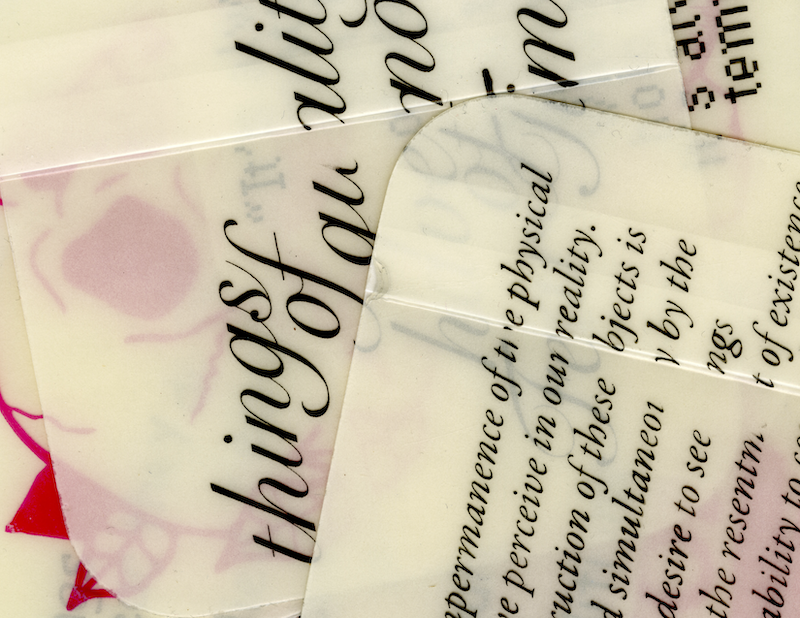
.jpg)

.jpg)
.jpg)
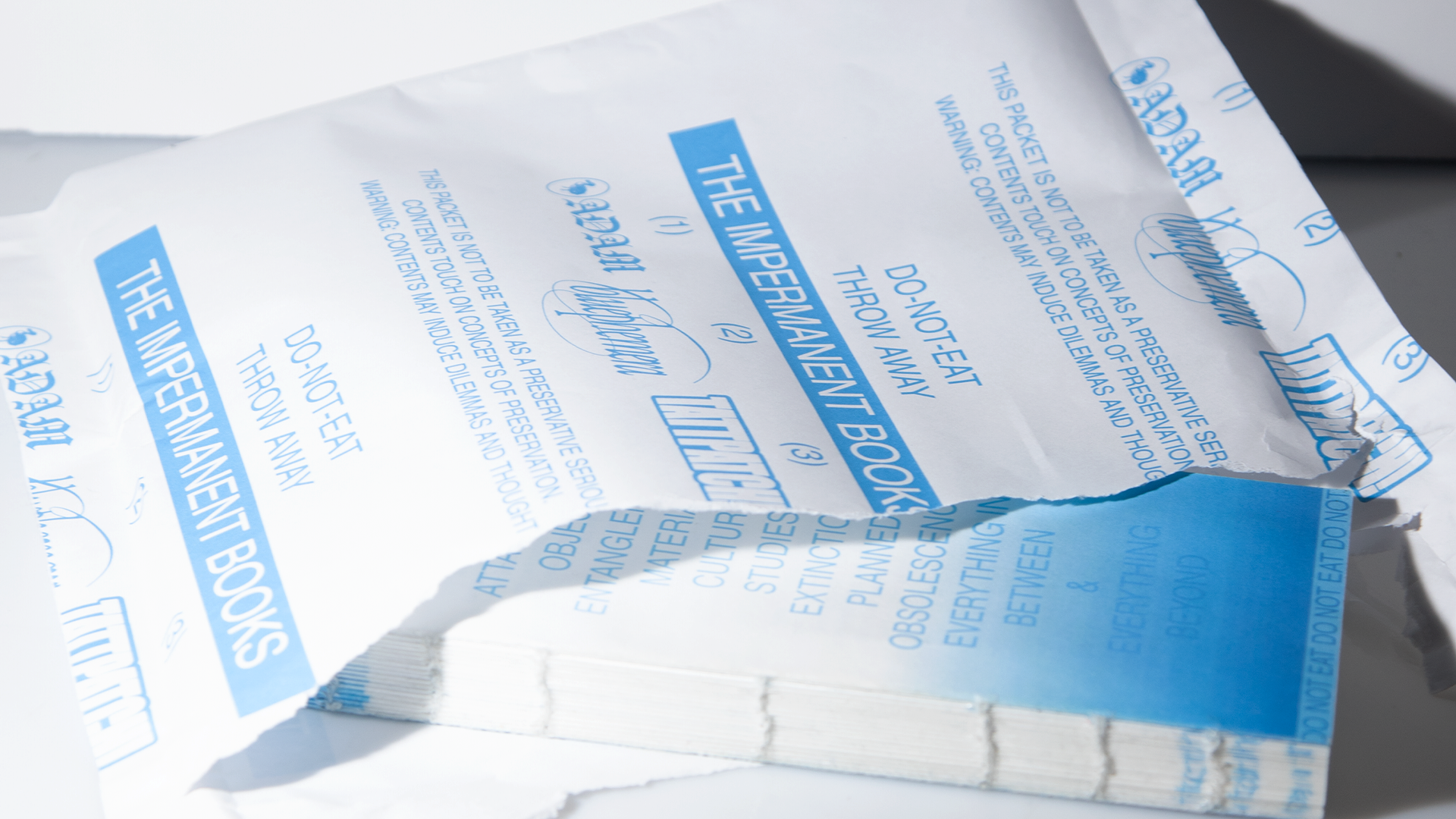
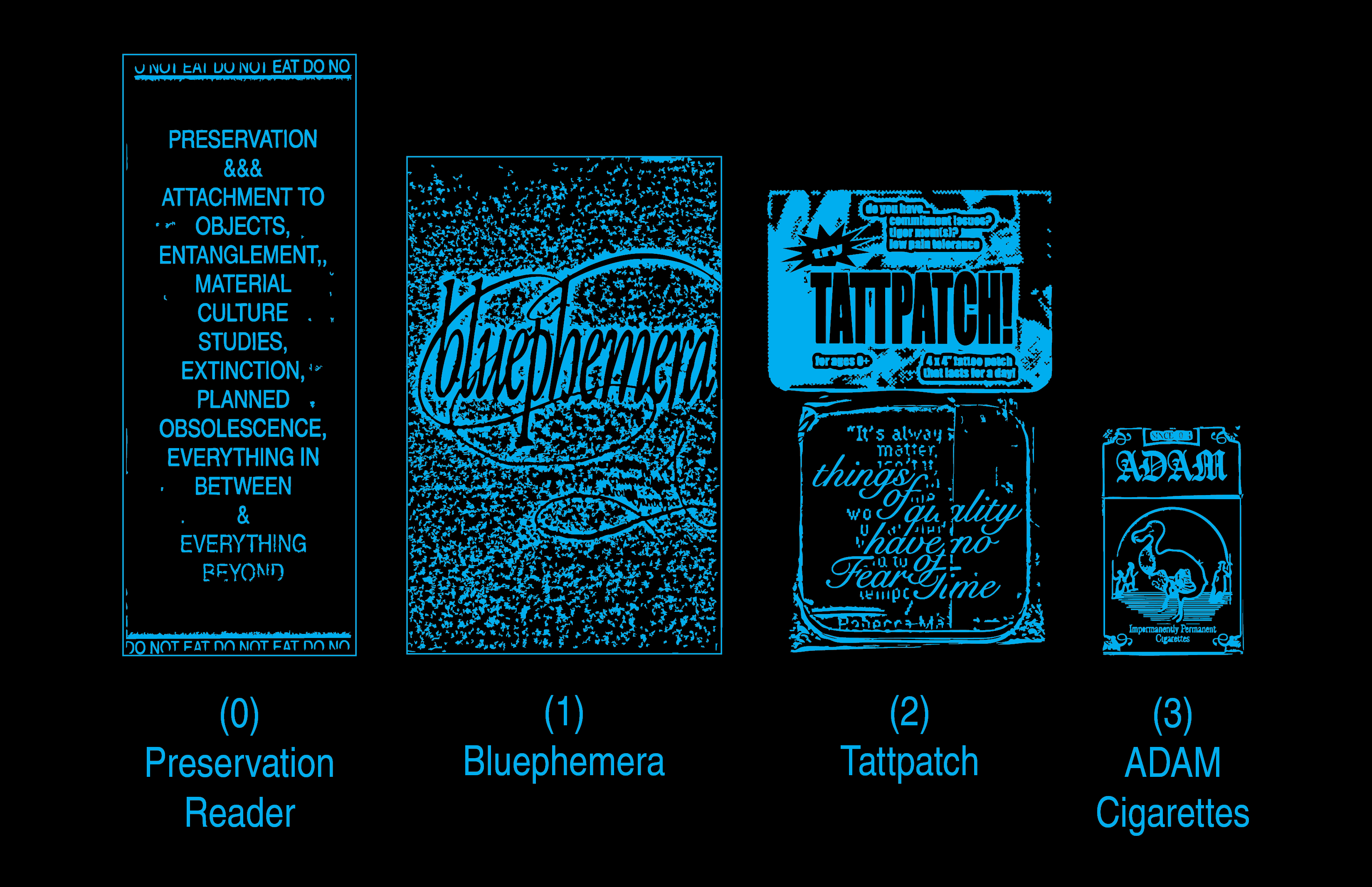
⟵
The Impermanent Books
2024
What would you do if you were handed a book with an intentionally limited lifespan? Would you attempt to preserve its original form? Could you avoid the edges tearing if you flipped through it daily? Would you store hundreds of digital replicas on your phone to deny its entropy? Or would you have no use for it, leaving it to collect dust and eventually decay?
The Impermanent Books is a series of experiments that aim to explore people’s intimate relationships with objects and their unique ways of preserving them. The project consists of three books that disintegrate at a faster rate than normal books. This is accomplished by introducing unconventional materials, production methods, and forms in the processes of bookmaking. This disintegrative character is counteracted by the reader’s impulse to either preserve or experience the books as intended despite their finite quality.
How we preserve objects in our lives is distinct for everyone. The Impermanent Books amplifies these differences by adding an expiration date, yielding a new relationship to the format of the book. The Impermanent Books is unified by the lightness of the overarching color selection, as if the content itself is anticipating its inevitable ephemeral transcendence into oblivion. As you attempt to grasp onto the physical existence of these books, you also face the dilemma of preserving or sacrificing your experiences with them.
Detailed Breakdown:
(0) The Preservation Reader is a compilation of scholarly publications that provide context for the present thesis. The reader consists of 10 articles which are organized into three sections: (I.) Humans and Objects, (II.) Death of Objects, and (III.) Preserving Objects. In the span of 10 articles, the reader contemplates the intuitive yet complex relationship between humans and objects, and how we preserve things that are tangible and intangible. The articles are arranged in a deliberate order, each one building off of the previous one to create a cohesive reading experience. Specific design choices in this book—center-aligning body text and leaving multiple orphans/widows within paragraphs—are commonly seen as mistakes and poor design in conventional typesetting practices. However, these choices are not only kept in this book, they are spotlighted as main features of this book as they extend the idea of preserving unwanted objects and forming attachment to inanimate things. The Preservation Reader, stylized as a preservative packet, functions as an archival collection (preservation) of relevant studies while laying ground for explorations in complex human-object connections that are uncovered in the experiments for this thesis.
(1) Bluephemera is a book that is crafted solely with cyanotype prints, with content that discusses the passing of print production physically and metaphorically. Since the production of this book relies on light and shadows, the resulting texts vary from crisp edges to blurred overlays, or sit at the cusp of an ambiguous marriage of the two. Each spread attempts to capture fleeting moments where the sunlight hits the chemically prepared paper, creating impressions that are meant to last for a long time. However, cyanotypes post-development are still sensitive to UV exposure and continue to face the risk of fading. Bluephemera is structured with half-fold pages with texts on the exterior of the spread and images on the interior of the folds. The intention of having the texts on the exterior convey the impermanence of information and printed texts, as the physical integrity weathers according to sun exposure. On the other hand, the images on the interior are preserved by being folded in and protected from the direct sunlight. The reader is presented with challenges of how the book viewing experience would be altered, given the choice to manipulate the delicate pages of bluephemera to their liking.
(2) Tattpatch is a book also in the form of a concept toy product. The satirical tone of the product implies that the demand for devices of impermanence are produced under stringent circumstances. The content of Tattpatch consists of quotes and graphics that relate to the impermanence of objects, screen printed onto hydrocolloid patches (pimple patches). Tattpatch indirectly functions as a book, with capitalistic inferences of a definite shelf life such as toys. The quotes on each patch (functioning as pages) invites the reader to reflect on the mortality of objects and humans, and the present state of existence, all while possessing the ability to adhere meaning to one’s body temporarily. Using the Tattpatches as intended would mean imposing a shorter life onto the object and information via text on hydrocolloid patches. On the other hand, the patches could be preserved but never experienced to its full extent. The convergence of the implication between something as deliberate as a tattoo and something as flimsy as a sticker-toy-book becomes crucial in exploring the nuances of permanence.
(3) The ADAM Cigarettes is a mini book formatted via the vessel of cigarettes. ADAM stands for the Auto-Destructive Art Manifesto written by Gustav Metzger in July, 1961. The manifesto comments on the self destructive nature of the man-made objects in this world, placing a significant emphasis on the way humans manipulate their surroundings and accelerate processes of disintegration. The ADAM Cigarettes strive to compress this ideology of destruction into something seen on the daily, translating it into a more digestible and ubiquitous form. The contents of the manifesto are also printed on individual cigarettes, paginated on the filters of the cigarettes in a specific order, giving it a structure akin to a book. Upon interaction, readers are faced with the dilemma of preserving the content by never smoking the cigarettes, or using the product as intended and losing the physical artifact as the wind carries away the remnants of its ashes.
Advisor(s):
Luke Bulman
The Impermanent Books
2024
What would you do if you were handed a book with an intentionally limited lifespan? Would you attempt to preserve its original form? Could you avoid the edges tearing if you flipped through it daily? Would you store hundreds of digital replicas on your phone to deny its entropy? Or would you have no use for it, leaving it to collect dust and eventually decay?
The Impermanent Books is a series of experiments that aim to explore people’s intimate relationships with objects and their unique ways of preserving them. The project consists of three books that disintegrate at a faster rate than normal books. This is accomplished by introducing unconventional materials, production methods, and forms in the processes of bookmaking. This disintegrative character is counteracted by the reader’s impulse to either preserve or experience the books as intended despite their finite quality.
How we preserve objects in our lives is distinct for everyone. The Impermanent Books amplifies these differences by adding an expiration date, yielding a new relationship to the format of the book. The Impermanent Books is unified by the lightness of the overarching color selection, as if the content itself is anticipating its inevitable ephemeral transcendence into oblivion. As you attempt to grasp onto the physical existence of these books, you also face the dilemma of preserving or sacrificing your experiences with them.
Detailed Breakdown:
(0) The Preservation Reader is a compilation of scholarly publications that provide context for the present thesis. The reader consists of 10 articles which are organized into three sections: (I.) Humans and Objects, (II.) Death of Objects, and (III.) Preserving Objects. In the span of 10 articles, the reader contemplates the intuitive yet complex relationship between humans and objects, and how we preserve things that are tangible and intangible. The articles are arranged in a deliberate order, each one building off of the previous one to create a cohesive reading experience. Specific design choices in this book—center-aligning body text and leaving multiple orphans/widows within paragraphs—are commonly seen as mistakes and poor design in conventional typesetting practices. However, these choices are not only kept in this book, they are spotlighted as main features of this book as they extend the idea of preserving unwanted objects and forming attachment to inanimate things. The Preservation Reader, stylized as a preservative packet, functions as an archival collection (preservation) of relevant studies while laying ground for explorations in complex human-object connections that are uncovered in the experiments for this thesis.
(1) Bluephemera is a book that is crafted solely with cyanotype prints, with content that discusses the passing of print production physically and metaphorically. Since the production of this book relies on light and shadows, the resulting texts vary from crisp edges to blurred overlays, or sit at the cusp of an ambiguous marriage of the two. Each spread attempts to capture fleeting moments where the sunlight hits the chemically prepared paper, creating impressions that are meant to last for a long time. However, cyanotypes post-development are still sensitive to UV exposure and continue to face the risk of fading. Bluephemera is structured with half-fold pages with texts on the exterior of the spread and images on the interior of the folds. The intention of having the texts on the exterior convey the impermanence of information and printed texts, as the physical integrity weathers according to sun exposure. On the other hand, the images on the interior are preserved by being folded in and protected from the direct sunlight. The reader is presented with challenges of how the book viewing experience would be altered, given the choice to manipulate the delicate pages of bluephemera to their liking.
(2) Tattpatch is a book also in the form of a concept toy product. The satirical tone of the product implies that the demand for devices of impermanence are produced under stringent circumstances. The content of Tattpatch consists of quotes and graphics that relate to the impermanence of objects, screen printed onto hydrocolloid patches (pimple patches). Tattpatch indirectly functions as a book, with capitalistic inferences of a definite shelf life such as toys. The quotes on each patch (functioning as pages) invites the reader to reflect on the mortality of objects and humans, and the present state of existence, all while possessing the ability to adhere meaning to one’s body temporarily. Using the Tattpatches as intended would mean imposing a shorter life onto the object and information via text on hydrocolloid patches. On the other hand, the patches could be preserved but never experienced to its full extent. The convergence of the implication between something as deliberate as a tattoo and something as flimsy as a sticker-toy-book becomes crucial in exploring the nuances of permanence.
(3) The ADAM Cigarettes is a mini book formatted via the vessel of cigarettes. ADAM stands for the Auto-Destructive Art Manifesto written by Gustav Metzger in July, 1961. The manifesto comments on the self destructive nature of the man-made objects in this world, placing a significant emphasis on the way humans manipulate their surroundings and accelerate processes of disintegration. The ADAM Cigarettes strive to compress this ideology of destruction into something seen on the daily, translating it into a more digestible and ubiquitous form. The contents of the manifesto are also printed on individual cigarettes, paginated on the filters of the cigarettes in a specific order, giving it a structure akin to a book. Upon interaction, readers are faced with the dilemma of preserving the content by never smoking the cigarettes, or using the product as intended and losing the physical artifact as the wind carries away the remnants of its ashes.
Advisor(s):
Luke Bulman